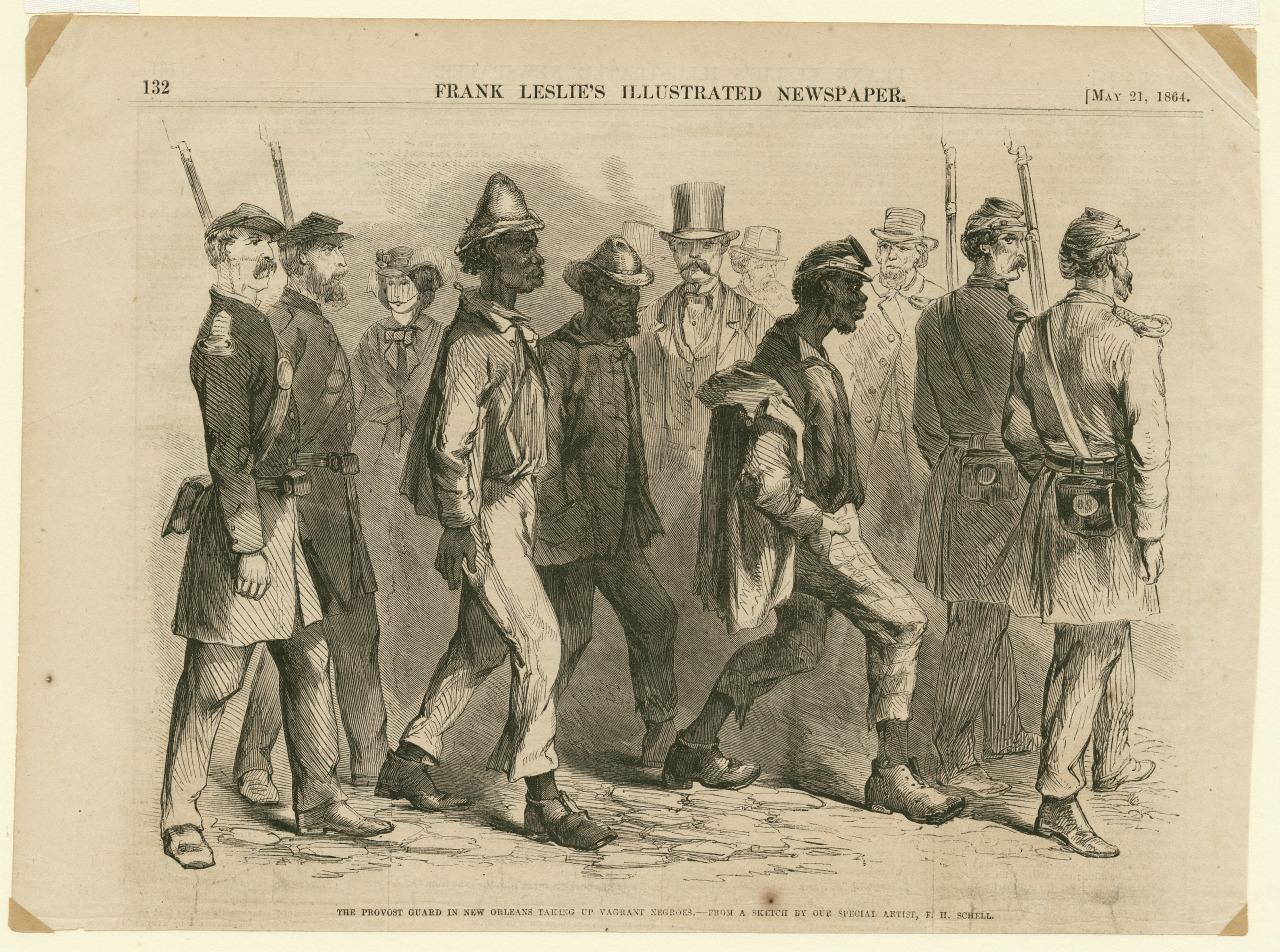The Great New Orleans Kidnapping CasePosted in Articles, Audio, History, Interviews, Law, Louisiana, Media Archive, United States on 2016-06-18 20:36Z by Steven |
The Great New Orleans Kidnapping Case
Tripod: New Orleans At 300
89.9 FM WWNO
New Orleans, Louisiana
2016-06-16
Laine Kaplan-Levenson, Producer
 The Provost Guard in New Orleans taking up Vagrant Negroes. (1974.25.9.190) THE HISTORIC NEW ORLEANS COLLECTION |
It was June. It was hot. Kids were out of school, keeping busy outdoors. Parents were inside. Kind of like how it is now, except it was 146 years ago.
“It is a world turned upside down,” says Michael Ross, historian and author of ‘The Great New Orleans Kidnapping Case: Race, Law, and Justice in the Reconstruction Era.’ He’s talking about the year 1870, at the height of reconstruction. “You have five cities in the South that have integrated their police forces, at a time when not a single police force in the North had integrated.
It’s true. The NOPD first hired black officers in the 1860s. New York City didn’t have an African American in their ranks until 1911. This is one of the many things that makes New Orleans a stage for social change in the U.S. after the Civil War. One crime in particular brought these changes into focus.
Molly Digby is 17 months old and playing outside with her older brother. Two women of color walk up to the kids and start talking to them, until they’re all interrupted by a loud noise down the street. The women tell the boy he can go see what all the excitement is about, and they’ll watch the baby. He runs off, and when he comes back, the women, and baby Molly, are gone.
“A white baby is abducted by two mixed race women called Mulattos at the time,” Ross explains. “That story would have been just one of many terrible stories of that day that would have been buried in the third page of the newspaper. But a number of factors lead to it getting front page attention.”…